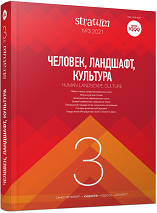Чужой в тандеме с хищником: звериные статусы и воинские ранги погребенных Солохи
Alien in Tandem with Predator: animal statuses and military ranks of the buried in the Solokha barrow
Author(s): Sergei Aleksandrovich KozlovSubject(s): History, Archaeology, Cultural history, History of ideas, Social history, Ancient World
Published by: Издательский дом Stratum, Университет «Высшая антропологическая школа»
Keywords: Lower Dnieper region; Scythians; Solokha; Scythian animal style; Herodotus; social hierarchy; anthropology of death;
Summary/Abstract: The present article attempts to transcode the “animal” status of those buried in the first monumental burial ground of the Scythians in the Lower Dnieper region — the famous Solokha barrow. Solokha’s materials are seen as an optimal case for such kind of study. On the one hand, two burials from different periods and of different statuses were found underneath the mound. On the other hand, each of the burials contained artefacts with depictions of wild and mythological predators, which makes it possible to correlate the statuses of the buried with the depictions of beasts. Based on the analysis of the funeral contexts in Solokha, and taking into account the semantics of animal styles, it is possible to conclude that the lateral grave belonged to a legitimate king of the Scythians (conventionally, “Oktamasades”) whose status was clearly marked by feline-shaped predators, and the central one — to a “prince” (conventionally, “Orikos”) who died at a young age and forever remained on the primary, “wolf” stage of military initiation.
Journal: Stratum plus. Археология и культурная антропология
- Issue Year: 2021
- Issue No: 3
- Page Range: 51-62
- Page Count: 12
- Language: Russian
- Content File-PDF

